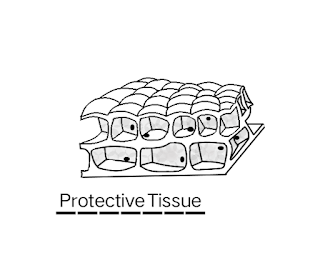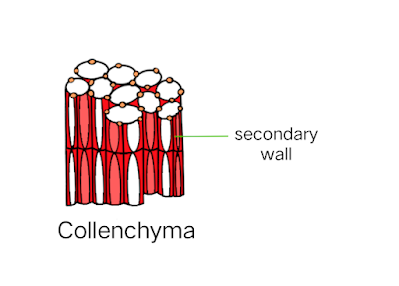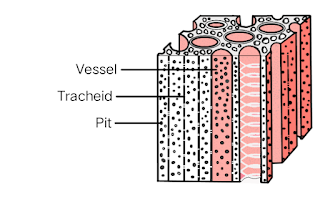What is Tissue - Plant tissue, Types and Clarification | Smartledge
Tissue
Hey Everyone, welcome back!!
Today In this article, let us try to understand a very familiar topic TISSUE, we'll cover - What is a tissue?, Types of tissue, and Functions of tissue in the plant and human body with their diagrams.
What is a tissue?
We have already learned that Cells are the building blocks of life and every organism is composed of cells but, a single cell is not enough to create multicellular organisms like plants and animals, Right?.
Therefore, Many structurally and functionally similar cells group together to perform the same function, Such groups are known as Tissues.
Tissue forms a cellular organizational level between the cells to the organ system. Organs are then formed by combining the tissue in the same way as cells.
Let's study our topic of the day - Tissue in detail ↓
Tissue Definition - A tissue is a group of similar cells that work together as a team to perform a specific function. For example Muscle or muscular tissue that are responsible to form muscles that help in the movement of the body.
Types of tissue
As tissues assemble to build an organ and organs are present in multicellular organisms like plants and animals, Therefore there are two types of tissues:-
Plant tissue and Animal tissue.
Let us dive deep into them ↓
Plant tissue
Plant tissue is divided into two groups based on the type of cells they comprise.
Types of plant tissue:-
• Meristematic tissue
• Permanent tissue
Meristematic Tissue
What is meristematic tissue?
Meristematic tissue or Meristem consists of undifferentiated cells that have the ability to divide to produce new cells until they are differentiated. It also helps in the growth of the length and diameter of plants.
The cells of this tissue are known as Meristem and are present in all the growing parts of the plant such as roots, stems, shoots, and branches.
Let's see the important characteristics of Meristematic tissue:-
• Cells of this tissue are known as Meristem.
• Cells of this tissue are immature and young.
• Cells have no intercellular space between them.
• Very small and few vacuoles are present in the cells, sometimes no vacuoles are present in the cell.
• Cells are spherical with thin cell walls.
• The nucleus of the cells is very large.
• It consists of undifferentiated cells that actively divide until they are differentiated or dead.
• Cells can develop into other tissues and organs present in plants.
• The protoplasm of the cell is very dense because of which it fills most of it.
• They also can heal the plant when injured.
Types of Meristematic Tissue
Meristematic tissue is classified into three categories based on its position and functions:-
1) Apical or Terminal meristem - This meristem is responsible for the growth in height of the plant through cell division. These are located in the tips of the roots and shoots.
2) Intercalary meristem - It is considered as a part of the apical meristem, this meristem increases the length of the plant for a limited period of time and is then transformed into permanent tissue. These are located in the leaves and base of internodes and are found in pines, grass, and monocot.
3) Lateral or Cambium meristem - This meristem increases the diameter (thickness) of the plant and is therefore also known as the secondary meristem. These are located on the lateral side of the root, stem, and bark of trees.
Permanent Tissue
What is a permanent tissue?
A tissue that is made up of cells that are completely grown, mature, differentiated, and have lost the ability to further continue cell division is known as permanent tissue.
A permanent tissue is obtained from meristematic tissue, the meristematic tissue divide and differentiates resulting in the formation of permanent tissue.
The cells of this tissue are of permanent shape and size and perform a specific function permanently. The cells are fully grown and thus are bigger as compared to the cells of meristematic tissue.
Types of permanent tissue:-
• Simple permanent tissue - These tissues are made up of only one type of cell i.e structurally and functionally similar cells. Simple permanent tissue is of two types:-
• Protective
• Supporting
Let's learn them and their types in detail ↓
1. Protective tissue
Protective tissue can be considered as a protection to the plant as it is present in the outermost layer of the plant body such as roots, leaves, and stems and functions in protecting the plant in many ways such as it prevents desiccation, infection in plants, and mechanical injuries.
 |
| Protective tissue |
They have thick cell walls which form a protective barrier that prevents the entry of pathogens into the plant body.
There are two types of Protective Tissues:-
• Epidermis - It is present in the outermost layer of the plant body like roots, leaves, stems, etc.. . Its main function is to prevent infection and desiccation in the plant body.
• Cork - Cork cells are dead and arranged tightly without an intercellular space left between them. They contain suberin that makes them impermeable to water and gases. These cells form the bark of the trees and protect the plant from infection and mechanical injuries.
"Epidermis and cork diagram*
2. Supporting tissue
Apart from protection the plant body also needs supporting tissue, therefore these tissue provides the supporting structure and also forms the framework of the plant body.
The supporting tissue is further divided into three types:-
a) Parenchyma
b) Collenchyma
c) Sclerenchyma
Let's learn each of them in detail ↓
 |
| Parenchyma Tissue |
a) Parenchyma - Parenchyma tissue consists of large, thin-walled, living cells and is found in soft parts of plants such as the Cortex (outer region) and the Pith (central region). The cells of this tissue are mostly round or oval and are loosely packed leaving intercellular space between them.
The cells contain chlorophyll that functions in helping the plant body in the process of photosynthesis and the cells also function in the storage of food as well as providing mechanical support to the plant. The cell wall is made of cellulose and the cells usually comprise a single large vacuole, a small nucleus with a dense protoplasm.
 |
Collenchyma Tissue |
b) Collenchyma - Collenchyma tissue is made up of living cells that are elongated and are completely packed with almost no intercellular space left between them.
The cells of this tissue consist of a thick cell wall made of cellulose, pectin, and water which results in providing mechanical strength to the plant body. Collenchyma also functions in providing elasticity or tensile strength to the leaf stalks, petioles, and stems that prevent the tearing/breakage of them. It also participates in the sugar manufacturing within the plant body and consists of less chlorophyll as compared to the parenchyma.
 |
| Sclerenchyma Tissue |
c) Sclerenchyma - These tissues are made up of long and narrow dead cells that are of different shapes and have thick cell walls with no protoplasm and intercellular space between them.
The secondary cell walls of the cells are very thick as they contain lignin that results in providing mechanical support and rigidity to the plant body. They are impermeable to water due to the presence of lignin in thick cell walls. The sclerenchyma tissue is present in non - growing parts of the plant such as bark, mature stems, around the vascular bundles, hard covering of seeds leaf veins, etc.
• Complex permanent tissue - These tissues are made up of more than one type of cell that coordinates to perform a specific complex function. They are also known as conducting or vascular tissue as they help in the transport of water and minerals in the plant body. This tissue makes the survival of the plant possible in the terrestrial environment.
The two types of complex permanent tissue are:-
• Xylem
• Phloem
Xylem and Phloem together form the vascular bundles in the plant, let's understand them in detail ↓
 |
| Xylem Tissue |
1. Xylem
Xylem, also known as wood tissue is made up of thick-walled cells that are mostly dead. These tissues function in the conduction of water and minerals from roots to the leaves in the plant. It also functions in providing support to the plant. When the xylem tissue gets old it forms wood and stops participating in the transport of water and minerals.
Xylem tissues are made up of different components, they are:-
• Tracheids - Cells are placed end to end resulting in the formation of the long, tubular structure. Functions in providing support to the plant by the thick cell walls.
• Xylem vessels - Made up of cells that are elongated and have thick and lignified cell walls. Functions in the transportation of water and minerals.
• Xylem parenchyma - Made up of living, xylem-associated parenchyma cells. Functions in the storage of food and the sideways conduction of water and minerals.
• Xylem fibers - Made up of long, thick-walled, dead sclerenchyma cells. Functions in providing mechanical support to the plant.
 |
| Phloem Tissue |
2. Phloem - The phloem tissue is the innermost layer of the bark in trees and functions in the translocation of food from leaves to different parts of the plant and also back from them to the newly growing leaves. It also functions in providing proteins and mRNA in various parts of the plant body. The phloem tissue is made up of specialized cells that include the sieve tubes, companion cells, phloem parenchyma cells, and phloem fibers.
• Sieve tubes - Made up of elongated cells that are placed end to end forming the sieve tube structure of phloem. The sieve plates (transverse walls) are perforated. Functions in the transport of food from leaves to other parts of the plant including storage organs.
• Companion cells - They are associated with the sieve tube cells. They are narrower than sieve tube cells, the walls are thin and made up of cellulose. Helps in the functioning of sieve tube cells and also is metabolically very active.
• Phloem parenchyma - Made up of elongated, cylindrical cells that are connected by Plasmodesmata connections. They have thin cell walls made up of cellulose. Functions in the storage of organic food materials like starch, fat, etc.
• Phloem fibres - Made up of dead cells and are also known as bast fibers. They are sclerenchymatous cells associated with phloem and function in providing support and strength to the plant.
The complex tissue i.e xylem and phloem collectively form the vascular bundles of the plant body.
Animal tissue coming soon, follow this blog to stay updated.
Also read - Cell organelles , Circulation of blood by heart



It's very informative and made. With great creativity!!,Lovely blog.,🙂🙂
ReplyDelete